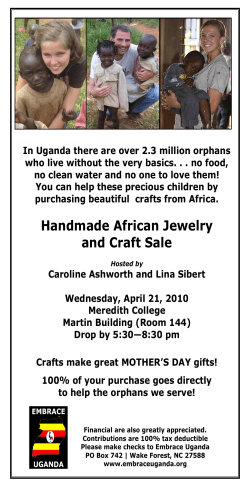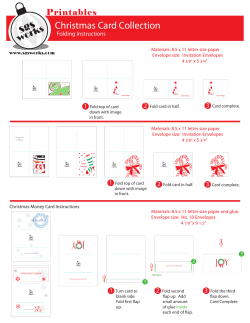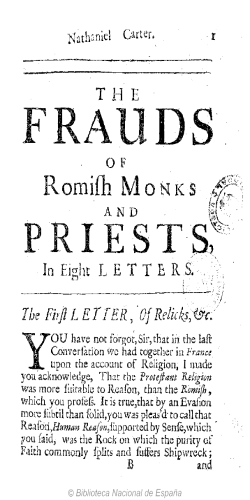
Clown of God
Clown of God Clown of God This lapbook is not a complete unit study, but it does provide you with some resources and ideas to use as you read Clown of God together. History: Renaissance Use mini books on pages 3-6. Vocabulary: orphan, orphanage, monk, monastery Use mini books on page 7. Math: Ordinal Numbers (and Story Recall) Use mini book on page 9. Science: Gravity Use mini book on page 10 Language: Italian Use the mini book on pages 11-12 to help learn the Italian words in the story. Language: Legends Use the mini books on pages 13-14 to learn more about legends and to compare/ contrast two versions of this story. Geography: Italy Use the mini books on pages 15-16 to learn more about Italy. Bible: Giving God Glory Use the minit book on page 17. This study also includes copywork and a recipe for making stain glass cookies! Cut out pieces on solid black lines. Stack together with cover on top and staple on left side. Discuss with your student what life would have been like during Renaissance times. Many ideas can be taken from the illustrations in the story. Additional resources include: Life during the Renaissance by Patricia Netzley Life in the Renaissance series by Kathryn Hinds (The Church, The City, The Countryside, The Court) The Renaissance by Anna Claybourne Daily Life Life in the Renaissance Clothing Art Architecture Entertainment Food What is an orphan? What is an orphanage? What is a monk? Cut on solid black lines. Fold books matchbook stylebook. What is a monastery? More lessons to use while learning about orphans and monks. Bible verses for copy work…look after orphans and widows in their distress… James 1:27b I will not leave you as orphans. I will come to you. John 14:18 Orphans are children who have no mother or father to raise them. Many orphans around the world grow up in orphanages, group homes often run by governments or churches. Brainstorm ideas on what your family can do to help orphans. Some ideas to get you started are donate money, donate toys, donate books, make and send cards, put on a puppet show, or sing Christmas carols. Older students may want to research the plight of orphans around the world or from a particular country. Go-along books about orphans: Frances Hodgson Burnett’s A Little Princess adapted and illustrated by Barbara McClintock Orphan Train by Verla Kay A Shepherd’s Gift by Mary Calhoun Nikolai, the Only Bear by Barbara Joose Social studies-religion-Monks Giovanni meets two monks during his travels and performs for the Christ Child in a monastery. Monks were men who devoted their lives to serving God. They lived together in a monastery led by an abbot. Monks prayed and attended religious services every day and sometimes sang in church choirs. They each helped with other jobs around the monastery such as copying books by hand, teaching boys to read and write, caring for the farm animals, working in the fields, washing the clothes, or preparing the meals. Monks never married or had children, and they did not own any property of their own. Parent Resources about monks: A Medieval Monk by James Barter Life in a Fifteenth-century Monastery by Anne Boyd The two Little Brothers Giovanni meets mention their founder, Brother Francis. Saint Francis was born in Assisi and was the son of a rich merchant. Francesco (Francis in Italian) renounced the privileged life into which he was born and devoted himself to a life of poverty. He formed a new order of friars, or monks, who spent their time walking through small mountain communities cheerfully spreading God’s Word. Many of the stories about St. Francis revolve around his love for animals and nature. He is known as the patron saint of animals, birds, and Italy. Go-along books about Saint Francis: Brother Francis and the Friendly Beasts by Margaret Hodges Brother Sun, Sister Moon: The Life and Stories of Saint Francis by Margaret Mayo Cut out book as one piece. Cut on dotted lines. Fold left side under. Fold right side so that it is the cover of your book. Giovanni always juggles thing in the same order: first sticks, second plates, third the clubs, fourth the rings, fifth the burning torches, sixth the colored balls, and seventh the golden ball. Draw pictures of balls, plates, etc, paste them under the correct ordinal number flap. First Second Third Fourth Fifth Sixth Seventh Science-Physics Giovanni once dropped the things he was juggling and the people laughed and jeered at him. What caused his things to fall to the ground? Gravity! The Earth tries to pull everything down towards its center. This pull is called the force of gravity. When you lift things up, you have to pull against gravity. If you drop something, gravity pulls it to earth. If you rest the mid-point of a pencil on your finger, gravity will pull down equally on both sides of the pencil and it will balance in the air. Resources for gravity experiments: Janice VanCleave’s Gravity by Janice VanCleave, ISBN 978-0-550-50-1 Maestro Arrivederci Grazie Signora Signor Some Italian words used in Clown of God are Signora- the Italian version of Mrs. Or ma’am Signor- the Italian version of Mr. or sir Arrivederci- good bye Grazie- thank you Maestro- master Cut pocket out. Fold back flap up and wrap side flaps around the back and glue down. Glue the back of your pocket into your lapbook. My Italian Words Cut out cards. Write meanings of the words on the cards. Use blank cards to add more words. Discuss legend with your student. A legend is a semi-true story, which has been passed on from person-to-person (usually orally). There may be some facts in the story, but it has usually been embellished to include mythical qualities: amazing heroes and fantastic places. What parts of Clown of God are probably true? What parts are embellished? What legends have you read? What is a legend? If you can, get a copy of The Littlest Juggler by Barbara Cooney and compare it to Clown of God. (Use the Venn diagram on the next page to aid in your discussion.) More Legends to Read: The Legend of the Three Trees The Legend of the Candy Cane John Henry Johnny Appleseed Directions for Assembly: Cut out strip as one piece. Fold like an accordion. Paste back of last piece to your lapbook. The Little Juggler By Barbara Cooney Both Cut out book as one piece. Fold in half on the black line. Cut on the dotted lines to form three flaps. The Clown of God by Tomie dePaola Ways I Can Give God Glory Cut out as one piece. Fold top flap down. Fold left side in. Fold right side in so that it is the cover of your book. On the inside, write ways to give God glory. Whatever you do in word or deed, do all in the name of the Lord Jesus, giving thanks through Him to God the Father. -Colossians 3:17 Giovanni performed for God’s glory at his final performance. Think of different occupations and how people can give glory to God while doing these jobs. Draw your child’s attention to the fact that Giovanni performed his very best when he juggled for Mary and the Christ Child, and not for the temporary praise from people. Think of some of your own jobs or chores. How can you give glory to God while doing them? List ways you could give glory to God while doing them. cover Giving God the Glory Cut “Flag of _______” book out as one piece. Fold in half. Cut out flag. Color. Paste inside book. Older students may want to write a few flag facts in the book as well. )N )O<GT 7C@M@ DI OC@ 7JMG?¤ Cut out shutter book and map on solid lines. Fold shutter book on dotted lines so that words are on cover. Glue map into book under shutters. 7C<O>JIODI@IODN)O<GTJI _________________________ &DI?)O<GTJIOC@H<K<I?>JGJMDODI STAIN GLASS COOKIES It was during the Renaissance that they started making the circle windows. Architects used the circle to represent the perfection of God. Also during this time stain glass windows were used to tell Bible stories for people who could not read. We made stain glass windows. I used sugar cookie dough and rolled it out. Samantha cut the dough into circles with a smaller circle in the middle. She then crushed life savers and put it in the empty circle in the middle. Make sure you cover your pan with foil or the life savers when baked will stick to the pan. When we crushed the lifesavers, we talked about how glass was made. Glass was made from sand and then it was fired. Then they painted the glass and re-fired it. By baking our "glass" she got to see the process it went through when heated. Recipe Ingredients: Lifesavers 1 cup sugar 1/4 cup shortening or butter 1 teaspoon vanilla 2 eggs 2 1/2 cups flour 1 teaspoon baking powder 1 teaspoon salt Directions: Preheat oven to 375'F. Mix sugar, shortening, vanilla and eggs in large bowl. Stir in flour, baking powder and salt; cover and refrigerate 1 hour (or longer). Roll dough 1/8-inch on floured board. Cut using medium-large circle cutter; cut each large circle with a smaller circle (so you have a hole in the center). Place on large, foil covered, cookie sheets. Crush Lifesavers; place in cut outs. Bake until very light brown and candy is melted-- 7-9 minutes.
© Copyright 2026













